The Room Where It Happens: Mike Curb College Theatre Students Unlock Their Creativity in the Experimental Theatre at The Soraya
The women had had enough, so they dismantled their reality-TV show set. They tossed the clothing rack full of bikinis and lingerie, ditched the vanity and makeup, and ripped away all the pink from the room’s “conversation pit” — getting rid of the fluffy pillows, the feathers, and the fabric that lined the space.
The energetic scene was part of an ancient story told in a new way. “Lysistrata,” originally written by Aristophanes in 411 B.C., was now set within an early-2000s reality TV studio. The change was the idea of three (now graduated) CSUN Theatre student co-directors: Autumn Tatnall, Malu Pizzatto and Victor Cruz Martinez, working with professor Larry Biederman.
In Aristophanes’ original version, the title character leads the women of Greece in a sex strike to pressure their husbands to end a civil war. In CSUN’s spring 2023 version, the actors’ costumes and mannerisms evoked 2000-era stars including Paris Hilton, Britney Spears and Avril Lavigne (Lavigne inspired actor Trinity Medina’s portrayal of Lysistrata). This production kept the dialogue from Ellen McLaughlin’s 2003 adaptation, as well as the original’s themes about females rebelling in a male-dominated society — and the student directors’ concept highlighted the harmful ways women have been treated in more modern, popular media. Where the women seized the treasury in the original version, they seized the studio in this one, stripping away the pink that represented the male gaze.
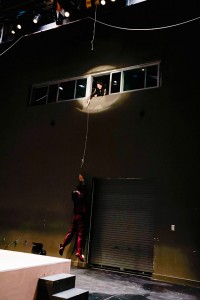
From high in the the booth of the CSUN Experimental Theatre, the character of Lysistrata taunts the owner of the reality TV studio (in the original play, this character was the magistrate) by dangling keys to the captured studio just out of reach. Photo: Brandon T. King
The directors needed their performance space to emphasize their novel approach to the classic comedy. CSUN’s Experimental Theatre, the department’s most flexible performing space, was perfect for the job. It’s located in a wing of the Younes and Soraya Nazarian Center for the Performing Arts that’s dedicated to learning spaces for students in the Mike Curb College of Arts, Media, and Communication. These academic spaces within The Soraya were made possible by a $5 million gift toward the performing arts center in 2006 from music industry mogul and former California Lt. Gov. Mike Curb ’09 (Hon.D.), creating an integral link between the academic programs of the Mike Curb College and The Soraya.
The “Lysistrata” co-directors and their collaborators used the Experimental Theatre’s flexibility to their advantage to make it look and feel like a TV studio. Audience members are usually seated with their backs to the theatre’s tech booth and storage closet, but this time the directors made those features part of the set. Early on, Lysistrata grabbed the keys to the storage closet and opened its garage-style door to seize the men’s territory, letting in the protesting women. Moments later, the character appeared through the high window of the tech booth to show they had conquered the studio.
“That was just a straight ‘eureka’ moment,” Tatnall said. “We utilized the space in a way that I had never seen the Experimental used before.”
The Department of Theatre has long used the Experimental Theatre to find creative ways to tell stories. The inventive ways they’ve used the space provides just one of many examples of how students in the Mike Curb College have benefitted from the beautiful and cutting-edge spaces and programs at The Soraya.
The symbiosis is ongoing. Two of CSUN Theatre’s four fall shows will run in the Experimental Theatre. The first — “They Never Called It Chavez Ravine!” — opens Sept. 20.
“It makes you proud to teach at a university that puts the focus on the arts, puts the focus on the students, and builds a building like this,” said professor Garry Lennon, who was theatre department chair when The Soraya opened in 2011 and was involved in planning meetings for the Mike Curb College’s academic spaces. “It’s a testament to their commitment to what we do.”
A Space to Play
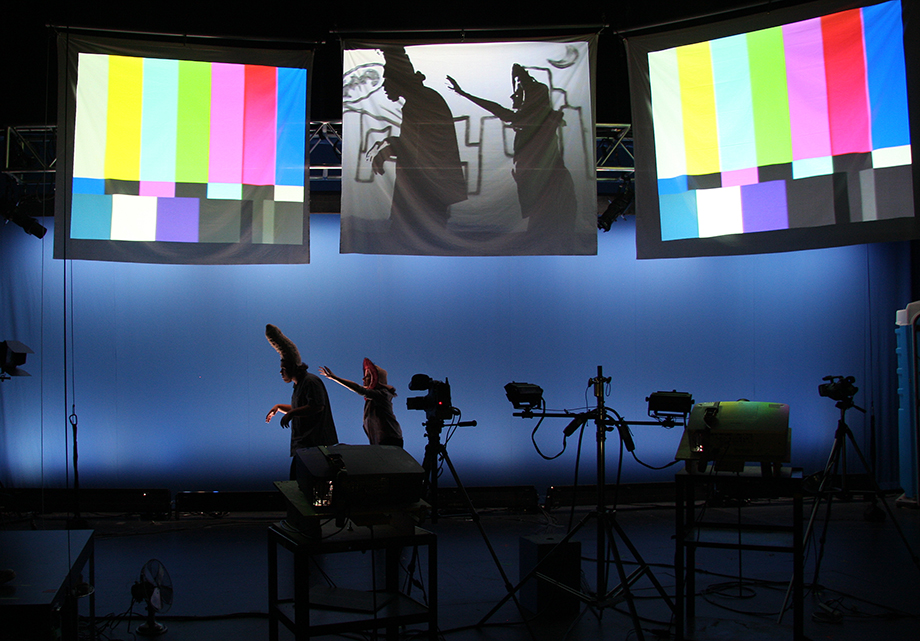
A 2012 production of “Ubu Roi” by Alfred Jarry, translated by Barbara Wright. Actors: Eric White and Cara Failer. Every scene was performed in front of a camera with the scenes being projected on to the screens hung from the theatre’s grid, providing new perspectives and opportunities for experimentation. The play was directed by professor Larry Biederman. Photo: William Taylor.
The Experimental Theatre differs from the department’s two other theatres on campus — the Campus Theatre and the Little Theatre — which are proscenium theatres, where everyone in the audience faces a mostly fixed stage. It’s what’s known as a black box theatre: a simple, square performance space, with a flat floor that enables the stage and seating to be configured in a variety of ways.
With room for about 160 seats, the intimate Experimental Theatre has the smallest seating capacity of the department’s three theatres. Audience members sit just a few feet from the stage and, depending on the configuration, actors can sit, walk or sprawl amongst — or even above — them.
CSUN theatre professors can — and often do — experiment in the other theatres, but the flexibility of the Experimental Theatre widens the range of creative storytelling possibilities, lending itself to immersive contemporary works and re-imaginings of centuries-old plays.
“It’s a way to model to our students that we want theatre to keep evolving or changing,” said Biederman, who has directed more plays in the Experimental Theatre than any other faculty member. “If we keep copying what we’ve seen before, particularly when you’re doing Shakespeare or a play that’s been done many, many times, why do it again — unless you’re adding some point of view for yourself? It’s important to model that to the students, who I hope will evolve theatre into things that I could not have dreamed up.”
Immersive Experiences

In the fall 2022 production of “The Hatmaker’s Wife,” directed by professor Larry Biederman, the wife (played by Tommi Jo Mongold) took a seat in the audience, which represented a seat on a train. Photo: Brandon T. King
In fall 2022, for the Lauren Yee play “The Hatmaker’s Wife,” directed by Biederman, the audience sat on all four sides of the stage (a setup known as “arena” or “in-the-round”), and the stage represented a house. When the wife runs away from home, the actor moved into the audience, exiling herself from the set. Later, when the wife gives a monologue on a train, it’s as if the person next to her is another passenger, making the audience part of her world.
For the 2016 production of the Sophocles play “Antigone,” director and CSUN professor Anamarie Dwyer and her students took out all the seats so the space represented rubble and the aftermath of war. Actors shared the space with the audience (an “immersive” setup), moving through them as the story unfolded.
“Audiences don’t know what to expect when you go into that space,” Lennon said. “In other spaces, you know what the rules are. In the Experimental Theatre, it’s slightly different.”
“They Never Called It Chavez Ravine!” kicks off the fall theatre season Sept. 20-23 in the Experimental Theatre with direction by Edgar Landa. The stage and seating will resemble a baseball stadium. (Culture Clash, the acclaimed performance troupe that created the play, will present an all-new show in The Soraya Great Hall on May 4, 2024.)
The second fall show in the Experimental Theatre is “Men on Boats,” written by Jaclyn Backhaus and directed by Allison Keating. It opens Nov. 1, turning the theatre into the Colorado River and the Grand Canyon.
All CSUN Theatre productions are open to the public.
Making Magic

Actors from the CSUN Department of Theatre’s spring 2023 performance of “Lysistrata” take a curtain call from the Experimental Theatre’s storage closet, which became part of the set to create the illusion of a TV studio. Photo: Brandon T. King
Theatre undergraduates in the Mike Curb College are required to participate in the department’s productions each semester as part of their curriculum. Students audition for their roles as actors or sign up to be part of the stage crew. Student directors are recruited by Biederman from his directing classes.
The shows produced are usually picked by a small committee of faculty and staff members, said Eric White ’17 (Theatre), theatre marketing and PR associate, who as a former CSUN student co-directed “Angels in America” in spring 2017 in the Experimental Theatre. Plays are directed by faculty, luminaries in the Los Angeles theatre scene, or students. Student-directed plays typically have taken place in the Experimental Theatre. For the first time, this fall students will co-direct a play in the Little Theatre (“The Killing Game,” Oct. 11-14).
The visions of the director(s) and collaborators are brought to life by theatre staff, faculty, students and contracted experts — a team including designers of scenery, costumes, lighting, sound and projection, as well as the technicians and crew that facilitate those designs.
Tatnall was extremely excited about the “Lysistrata” set, with a “thrust stage” that projects into the audience. She loved how the “ultra-feminine” pink conversation pit represented the women’s world under the male gaze, but later, after they’ve defied the men and it’s clear that the strike is having an impact, the women made the space their own — and turned the conversation pit into a swimming pool.
“Our set designer, Salmah Beydoun, she really got it, and gave us everything we could have wanted and more,” Tatnall said. “It turned out really beautiful.”
The co-directing experience opened new avenues for Tatnall, an actor, dancer and singer who never had considered directing until Biederman approached her.
“It helped me unlock a portion of creativity that I didn’t even know lived inside of me,” she said.
The Mike Curb College Department of Theatre fall 2023 schedule begins Sept. 20 with “They Never Called It Chavez Ravine!” in the Experimental Theatre at The Soraya.
The Soraya season kicks off Sept. 30 with opening night, featuring the Martha Graham Dance Company centennial celebration.

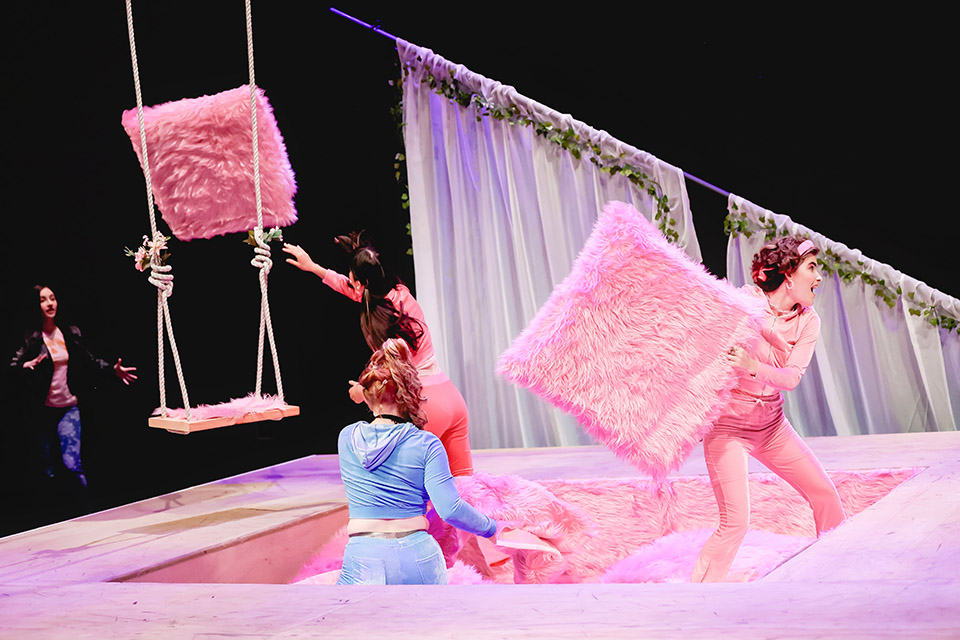
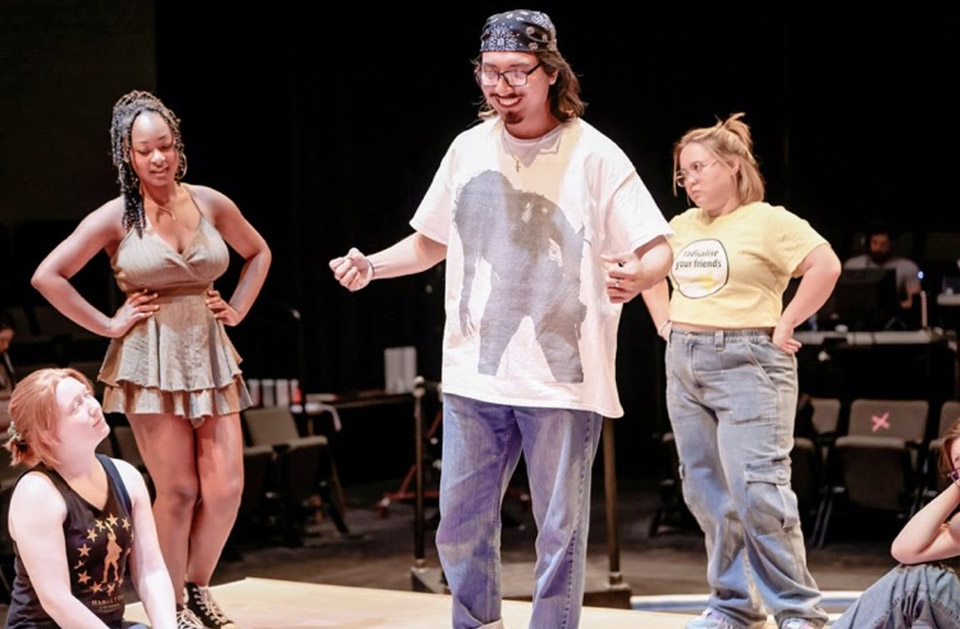
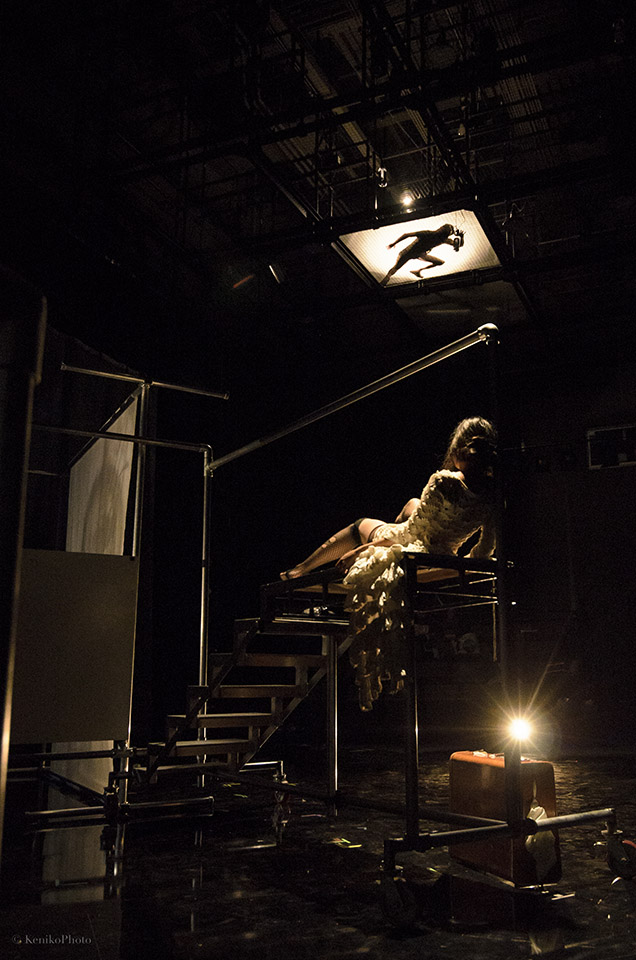
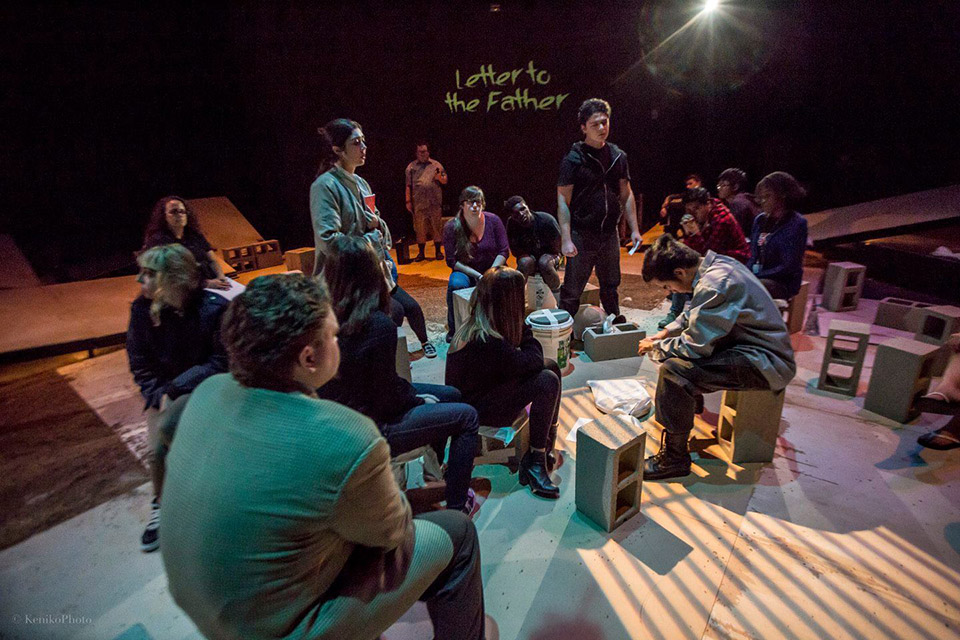
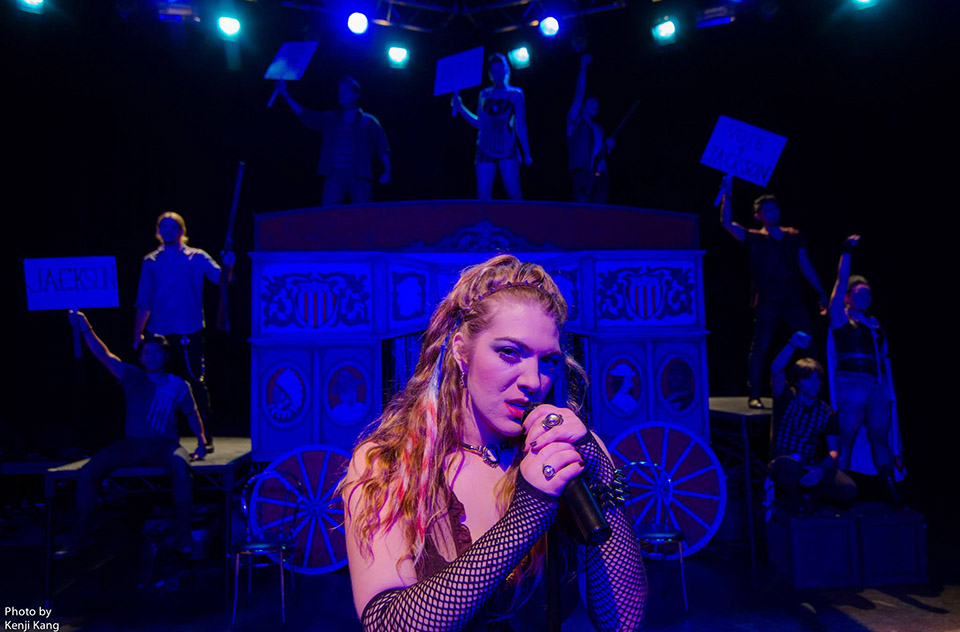
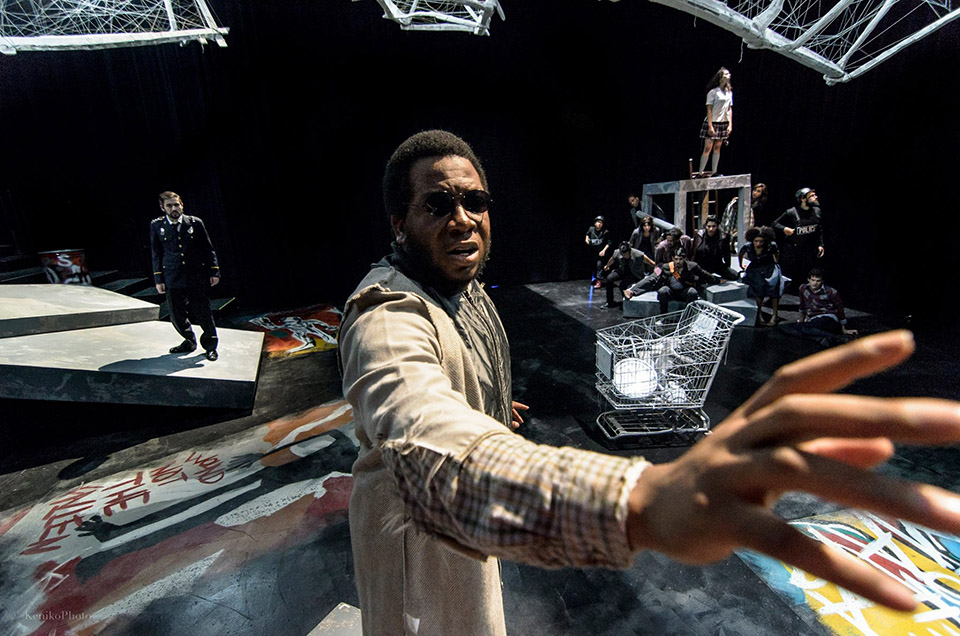

 experience
experience